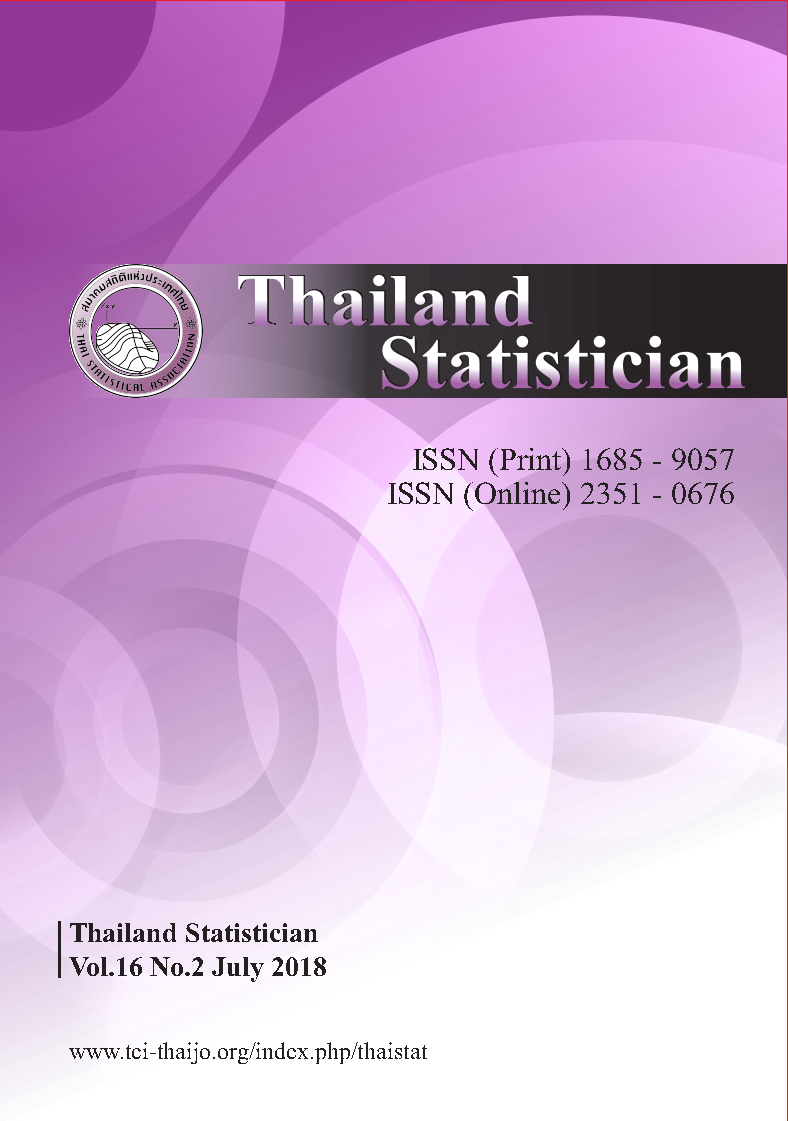Analyzing Rainfall Condition of Bangladesh: An Application of Markov Chain
Keywords:
Markov chain, rainfallAbstract
This paper aims to study the long term changes of rainfall at two stations in Bangladesh by using Markov Chain Model. For this study daily rainfall data were collected from Bangladesh Meteorological Department (BMD). Stationary distribution test has been employed and to test whether the daily rainfall occurrences are stationary or not. After 10 days and 8 days, stationary probabilities have been observed for Dhaka and Chittagong station, respectively. By analyzing limiting behavior of current day’s rainfall, it also has been observed that in Dhaka station 56% status of the day will be rainy and the rest of the condition will be sunny in May to October, whereas in Chittagong it is 58%. Lastly, using Cramer’s and the test of several correlations coefficient, it has found that the association among the daily rainfall occurrences decreases when order of the Markov chain increases.
References
Adler RF, Huffman GJ, Bolvin DT, Curtis S, Nelkin EJ. Tropical rainfall distributions determined using TRMM combined with other satellite and rain gauge information, J Appl Meteorol. 2000; 39(12): 2007-2023.
Anderson TW, Goodman LA. Statistical inference about Markov chains. Ann Math Stat. 1957; 28: 89-110.
Banglapedia. National Encyclopaedia of Bangladesh. Asiatic Society of Bangladesh. Dhaka; 2003.
Feller W. An Introduction to Probability Theory and its Applications. 2nd ed., Vol. 2. New York: John Wiley & Sons; 1957.
Gabriel KR, Neumann JA. Markov chain model for daily rainfall occurrence at Tel Aviv. Q J Royal Meteorol Soc. 1962; 83: 90-95.
Karmakar S, Khatun A. Variability and probabilistic estimates of rainfall extremes in Bangladesh during the southwest monsoon season. Masaum. 1995; 46(1): 47-56.
Mahanta J, Nath SK, Rashid MH. Using Markov analysis to study the impact of temperature in Bangladesh. Asia Pac J. Energy Environ. 2016; 3(3): 105-112.
Medhi, J. Stochastic Process. New Age International Publishers; 1984.
Rana M, Shafee S, Karmakar S. Estimation of rainfall in Bangladesh by using Southern oscillation index. Pak J Meteorol. 2007; 4(7): 7-23.
Ross SM. Introduction to Probability Models. Academic Press, San Diego, CA; 2003.
Roy M, Biswas B, Ghosh S. Trend analysis of climate change in Chittagong station in Bangladesh. Int Lett Natural Sci. 2015; 47: 42-53.
Ross SM. Introduction to Probability Models. Academic Press. San Diego. CA; 2003.
Shamsuddin S. Rainfall variability and the trends of wet and dry periods in Bangladesh. Int J Climatol; 2009.
Stern RD, Coe RA. Model fitting analysis of daily rainfall data. J R Stat Soc Series A. 1984; 147: 1-34.
Whittle P. Some distribution and moment formulae for the Markov chain. J R Stat Soc. 1955: 235-242.
Wikipedia. Examples of Markov chains; 2010. Available at: http://en.wikipedia.org/wik




